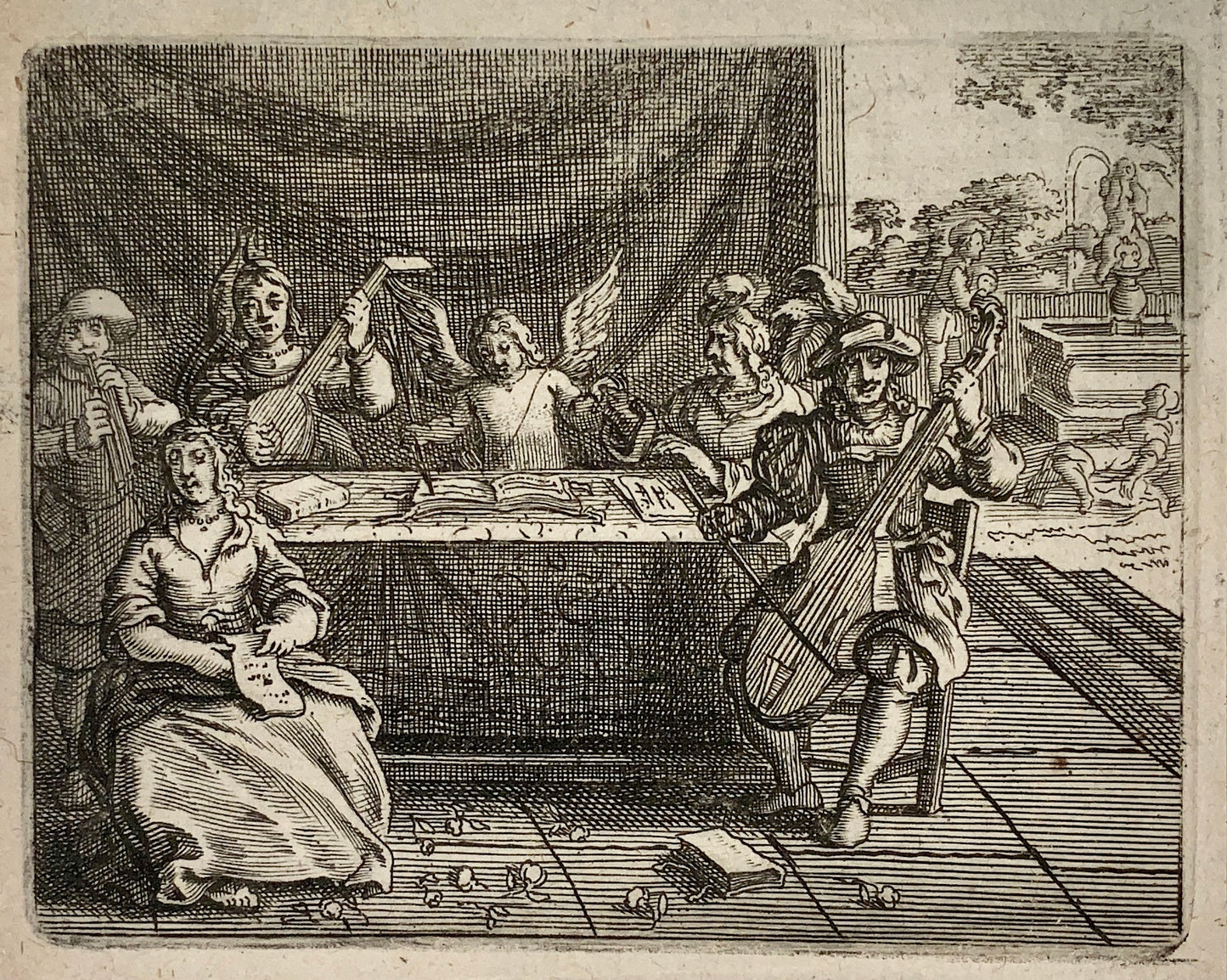1656 Adriaen van de Venne - Emblem - ‘Amor docet Musicam’ cello angel lute flute
1656 Adriaen van de Venne - Emblem - ‘Amor docet Musicam’ cello angel lute flute
Couldn't load pickup availability
Amor docet Musicam (Love teaches Music)
Cupid, or Eros, representing Love, is seated at a table surrounded by figures singing or playing music. Seated before an open book of music, Cupid directs the group and sings with them. He seems to be marking the tempo by tapping his arrow on the table. Two aristocratic ladies are seated on each side of Cupid. Cupid holds the hand of the woman at the left who wears a turban and sings. The woman to the right of Cupid wears an unusual pointed headdress which supports a veil behind her. She plays a lute and also sings. A gentleman at the far left plays a bass viol. On the far right is a jester who plays panpipes. Another object, oval in shape and with a handle, is suspended from his waist. Seated before the jester is a woman wearing a wreath in her hair. She appears to be a shepherdess, as a crook and scattered blossoms lie at her sandalled feet. She holds a long scroll of paper in her lap and sings with the rest of the group. The musical group is seated in a room, the left side of which is curtained off. The whole scene is viewed through an architectural framework, a roundel within a square. In the right background quadrant, there appears to be a view through a window. It is a scene depicting a man who leans on his staff as he gazes at a woman sleeping before a fountain. At the top of the fountain is a statue of a putto or cherub who pours water from a vessel.
Emblematic engraving after Adriaen van de Venne for J. Cats published in 1656.
8.8 x 7.2 cm
Fine copper engraving. Text and part plate to verso.
Adriaen van de Venne (1589 – 12 November 1662), was a versatile Dutch Golden Age painter of allegories, genre subjects, and portraits, as well as a miniaturist, book illustrator, designer of political satires, and versifier. From 1620 until his death van de Venne made many grisailles and engravings of genre subjects, featuring peasants, beggars, thieves and fools as illustrations of current proverbs and sayings, mostly by Jacob Cats. This work made him famous during his lifetime, and remained popular throughout the 18th century after his death.
Attribution of the engraver is a little more difficult as few engravings after Venne were signed, although it is believed most were completed by J. Swelinc, I. Matham, Wil. Hondius, C. v. Quiborne, D. v. Bremden & possibly others.
Share

Subscribe to our emails
Subscribe to our mailing list for insider news, product launches, and more.
